| East-West Line disruption (Sep 2024) |
|
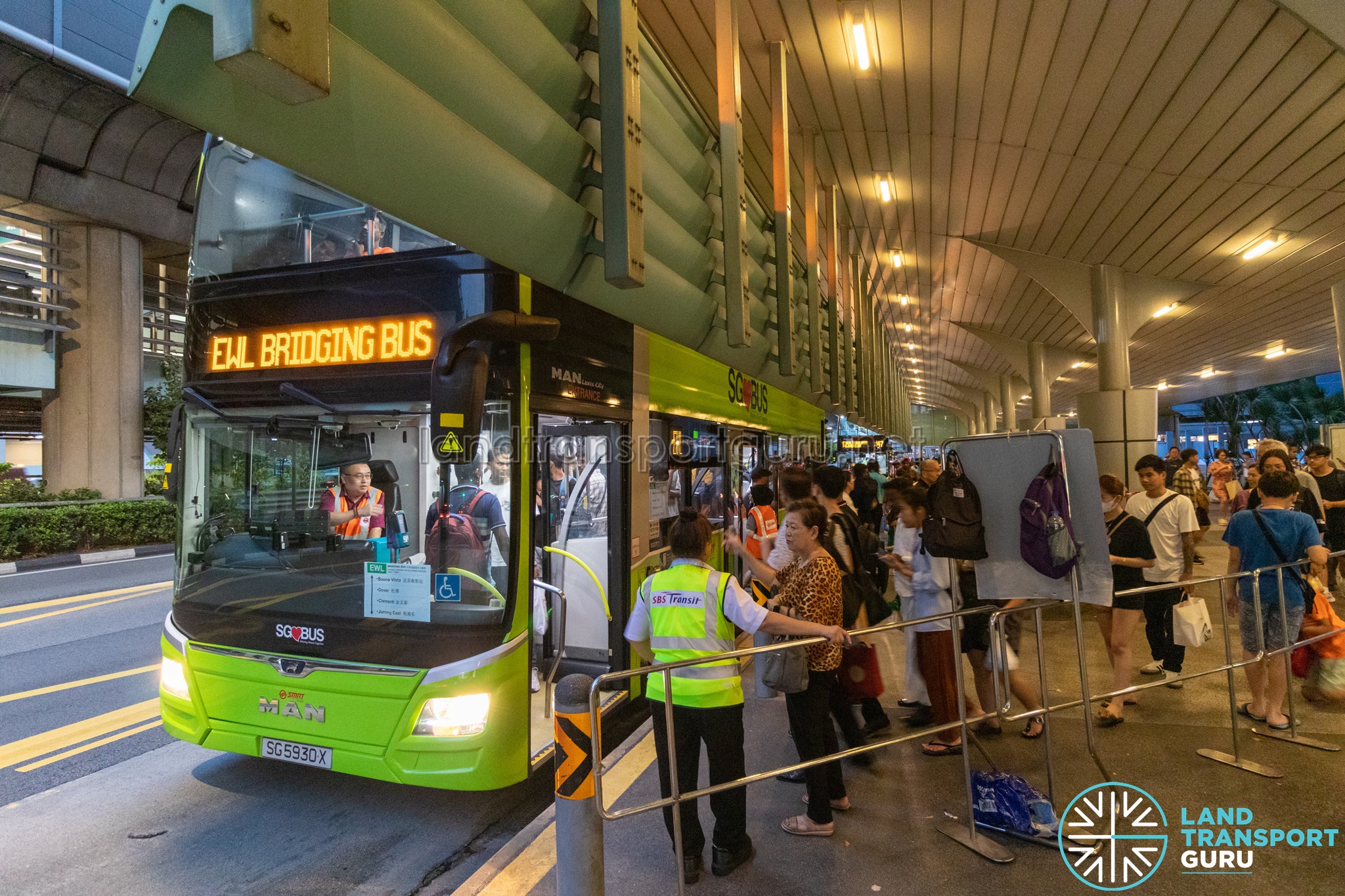 |
|
| Date | 25 September 2024 |
| Location | Between Dover MRT and Ulu Pandan Depot |
| Rail line | East West Line |
| Operator | SMRT Trains |
| Type of incident | Train car derailment & extensive damage to permanent way |
| Cause | Dislodged train axle box |
| Train involved | Kawasaki Heavy Industries C151 (065/066) |
| Injuries | NA |
On 25 September 2024, a major disruption occurred on the East-West Line when a defective axle box was dislodged from a KHI C151 train, causing one bogie to come off the running rail between Dover and Clementi stations. This caused extensive damage to the running rails, with rail breaks found across 2.55 kilometres of track, along with damage to rail fasteners, the third rail, power cables and point machines.
Due to extensive damage, train services were disrupted for six days (25–30 Sep 2024), with normal train services only resuming on 1 October. This was among the longest MRT train disruptions in Singapore’s history and the longest since 2017. About 500,000 out of 2.8 million train journeys were affected on each day of the disruption.
The investigation concluded on 3 June 2025, identifying the overheating and failure of the axle box as the cause of the incident, with SMRT’s deferred maintenance overhaul of the affected train and a malfunctioning trackside axle box temperature monitoring system as contributing factors. LTA also imposed a financial penalty of $3 million on SMRT.
Incident Background:
The disruption began around 9 a.m. on 25 September 2024, when a first-generation Kawasaki Heavy Industries C151 train (Set 065/066) experienced a fault near Clementi station. A power trip occurred, and smoke was emitted. Passengers on the eastbound train disembarked at the station, and SMRT subsequently withdrew the train from service by rerouting it onto the westbound track at Queenstown station.
While the train was heading back to the Ulu Pandan Depot near Dover station, a defective axle box on the third carriage fell onto the tracks. This caused one of the bogies to derail, which led to a trail of significant damage to both the tracks and nearby trackside equipment. The train eventually came to a stop along the eastbound reception track heading into Ulu Pandan Depot.
The derailment and resultant track damage caused a power trip around 9:25 a.m., causing the incident train to stall between the reception track and the main line. As this section of third rail was linked to the same power supply that serves the third rail on the eastbound track, the power supply to the eastbound track was thus also tripped.
The power trip caused four other trains between Clementi and Buona Vista stations to stall. Three of these were at stations, where commuters could alight at the platforms. One of the trains stalled about 40 meters before the platform at Clementi station, and as a result, approximately 850 passengers were detained onto the tracks and guided back to Clementi station.
The incident caused train services between Boon Lay and Queenstown to be disrupted.
Train involved
The train involved in the incident was a first-generation Kawasaki Heavy Industries C151 train (Set 065/066). It was one of 66 trainsets manufactured between 1986 and 1989 for the North-South and East-West Lines, and had been in service for more than 35 years.
Notably, set 065/066 was one of six C151 trains to be upgraded with PMSM traction motors back in 2017. This involved replacing the ageing traction motors and control electronics with modern equivalents that were more energy-efficient and easier to maintain. It is not known if these modifications would have contributed to the structural failure of the axle box.
What is an axle box?
Axle boxes are used to transfer the load of the train from the carriage to the wheels. Each axle of the train has an axle box at each end.
The axle box that failed was on the third carriage of the six-car train. This was identified as train car 2065. The middle carriages of NSEWL trains are motor cars, meaning that these bogie wheels are driven by an electric traction motor.
When one of the axle boxes dislodged from the incident train, it caused the wheels of the bogie to shift to the side of the rail. As the other eleven bogies of the incident train remained on the rails, the train was able to continue travelling for a few minutes on the rails westbound past Clementi.
The dropped axle box was later found beside the tracks near Dover station.
Damage to tracks & trackside equipment
LTA and SMRT discovered 34 rail fractures, including cracks and chips, along a 1.6 km stretch of track between Clementi and Dover stations. 33 severely damaged rail segments, each weighing more than one tonne, had to be replaced.
The derailed train also damaged three point machines, which are used to mechanically operate rail switches, and also dislodged several rail fasteners. One point machine, located between Jurong and Clementi stations, was so severely damaged that it could not be salvaged and needed replacement.
Sections of the third rail along the eastbound track were also damaged. The third rail provides electric power to the trains.
On 29 September, an additional 12 cracks were found on unreplaced rail segments between Clementi station and the track crossover to Ulu Pandan Depot. This necessitated the replacement of another 10 rail segments, for a total of 2.55 km of rail that needed replacement. This pushed back the full restoration of train services from 30 September to 1 October.
Service Recovery:
See also: Faulty C151 Train Causes Extensive Damage & Disruption to EWL Services | Land Transport Guru
Day 1 (Wednesday, 25 September 2024):
Following the power trip at 9.25am, free regular bus services were activated between Boon Lay and Queenstown at around 9:30am. Free bridging buses were also activated between Boon Lay and Queenstown at 9:50am. The bridging buses arrived from 9:58am onwards.
Later in the afternoon, SMRT and the Land Transport Authority (LTA) provided more details about the incident, acknowledging the extensive damage and confirming that train services would not fully resume for the rest of the day. Heavy rainfall further delayed recovery efforts.
Partial train service was restored using shuttle trains between Buona Vista and Queenstown at 3.56pm, as well as between Jurong East and Boon Lay at 4.11pm; both at 10-minute intervals. Bridging bus services were later adjusted to run between Jurong East and Buona Vista, while regular bus services between Boon Lay and Queenstown remained free. This arrangement would continue over the next few days (until 30 September).
By the evening peak, the number of bridging buses was increased from 39 before the peak period to 70, with an average interval of 3 to 8 minutes. This was quicker than the stipulated service standards of 12 to 15 minutes for bridging bus services. Additional spare buses were deployed and some bus captains on rest days were recalled.
At around 9:50pm, SMRT and LTA announced that the disruption would extend into the following day, and overnight checks would be performed on all first-generation KHI C151 trains before passenger service.
Day 2 (Thursday, 26 September 2024):
On 26 September 2024, LTA and SMRT revealed that 34 rail fractures had been identified along a 1.6-kilometre stretch of track. The incident also caused damage to three point machines, the third rail, power cables, and rail clips. Repair efforts continued throughout the day.
All Kawasaki Heavy Industries C151 trains in service that day had undergone and passed axle box functionality checks to ensure safe operations.
SMRT also reported that around 600 personnel from various organizations, including SMRT, LTA, other Public Transport Operators, the Public Transport Security Command (TransCom), and the Traffic Police, were involved in managing the crowds. About 80 double-deck buses were also deployed by SBS Transit, SMRT and Tower Transit to provide free bus bridging services between Buona Vista and Jurong East.
In the evening, LTA and SMRT announced that plans to partially restore train services between Jurong East and Buona Vista on Friday, 27 September, had been scrapped. Instead, the focus would remain on repairing the damaged tracks to restore full service by 30 September. Although they had considered operating a 20-minute shuttle train between Jurong East and Buona Vista, this option would have slowed down the repair work, potentially delaying full restoration by several days. The decision was thus made to prioritise repair and expedite restoring full EWL service.
Day 3 (Friday, 27 September 2024):
On 27 September, LTA and SMRT teams, along with contractors, continued working to replace the damaged tracks. Due to the rail fractures, engineers had to manually move new rails into place using mechanical jigs, as engineering vehicles could not be used. Fortunately, weather conditions were favourable, allowing progress in replacing power cables and two out of the three damaged point machines.
Restoration of the power rails was on schedule to be completed by Saturday morning.
Day 4 (Saturday, 28 September 2024):
LTA and SMRT teams continued working through the night and morning, making significant progress, including completing heavy rail delivery work. Efforts focused on replacing cracked rails along the 1.6 km stretch between Clementi and Dover, as well as repairing damaged track equipment. Shuttle trains, along with free bus services, continued to operate along the affected stations.
As of 7 p.m. on 28 September, all three track point machines and associated trackside equipment were repaired and had passed functionality tests. Power rails were also replaced, marking the completion of restoration work. SMRT planned to conduct comprehensive system functional and safety tests the next day, including checks on tracks, power supply, and train signalling. Trains would also be tested at various speeds throughout the next day.
Day 5 (Sunday, 29 September 2024):
Despite the completion of repairs on 28 September, additional cracks were discovered during stress and load tests. 12 new cracks, previously not visible to the naked eye, were detected on 10 unreplaced segments of running rail after these tests, likely weakened by the damaged train.
These new cracks meant that more repairs and testing would be necessary, delaying the reopening of the EWL. SMRT and LTA extended the service disruption to 1 October 2024.
Day 6 (Monday, 30 September 2024):
All affected rail segments between Clementi and Ulu Pandan Depot were successfully replaced overnight, and the third rail was reinstated. Several critical tests were completed, including the locomotive stress test, electric meggering test, and track circuit tests. The stress test ensured the structural integrity of the repaired rails, while electric meggering verified the electrical insulation of the third rail, allowing traction power to be safely restored.
Simulating the weight of a fully loaded train using sandbags, engineers conducted a loaded train endurance run to ensure the track’s strength and stability. With these tests completed, the system was prepared for the final stages of testing and passenger service.
That evening, SMRT and LTA announced that train services were ready to resume the following day (1 October). For safety reasons, westbound trains between Dover and Clementi stations would operate at a reduced speed of 40 km/h for three days, from October 1 to 3, to ensure safe travel on the repaired tracks. Commuters were advised to plan for an additional five minutes of travel time if travelling to the west on the East-West Line.
Day 7 (Tuesday, 1 October 2024):
Train services resumed on 1 October 2024.
SMRT implemented nightly inspections of newly replaced sections of rail between Jurong East and Buona Vista to ensure no further issues or defects arose, including using ultrasonic testing on every new welding joint. These increased inspections lasted for around a week before track inspections returned to the usual weekly schedule.
Recovery process
To recover the derailed train, the front two carriages (Car 3065-2065) were first uncoupled and pulled into Ulu Pandan Depot using a diesel locomotive. A temporary axle box was attached to the derailed train car before using a hydraulic system to rerail the carriage. Only then could the remaining train cars be pulled into Ulu Pandan Depot on the morning of 26 September.
On the night of 29 September, the derailed train car 2065 was transported from Ulu Pandan Depot to Tuas Depot by road.
Mobilisation of rail workers
More than 800 workers were mobilised between 25–30 September to repair the damaged rails, power cables, and trackside equipment.
SMRT deployed around 500 workers, including its entire track maintenance team, working around the clock in two 12-hour shifts. The LTA brought in 300 additional workers from external contractors engaged in other active rail projects, such as the Jurong Region Line and Circle Line Stage 6 extension. These workers operated in three shifts of eight to ten hours each. At its peak, 100 workers were stationed on the viaducts between Jurong East and Buona Vista, solely focusing on replacing the cracked or chipped rail segments.
The work was divided between LTA and its contractors, who handled the rail replacements near Dover station, and SMRT, which focused on the area near Clementi station.
Challenges faced during rail repairs
The repair work faced multiple challenges. Rain made it difficult to weld replacement rails to existing tracks, as exposure to moisture can result in poor-quality welds. Workers had to be sheltered under tents, and lightning posed additional hazards due to the open environment on the viaducts. Wet conditions also made the rails and sleepers slippery, increasing the risk of accidents.
On days without rain, extreme heat became another obstacle. High temperatures between 10 am and 3 pm caused the rails to expand, making rail-cutting difficult, as rail saws would often get stuck. The heat generated by welding equipment, which can reach up to 2,000 degrees Celsius, further complicated the work.
In addition, space on the rail viaducts was limited, exacerbating the challenges posed by the extensive track damage. Normally, engineering vehicles could deliver new rail segments directly to the replacement sites. However, with the rails damaged and power cut in the affected area, engineering vehicles could only deliver the rail segments to the nearest station (either Dover or Clementi). Workers then had to manually transport the new rail segments, each weighing around a tonne, using jigs which required eight workers to push. Each delivery took 30 to 45 minutes depending on the distance, with the farthest location being 600 to 700 meters from Dover station.
- EWL disruption: Checks on repaired track being done nightly to ensure no further issues surface | The Straits Times
- Restoration of EWL services a combined effort by foreign workers, contractors and volunteers | The Straits Times
- ‘This is my duty’: Station staff, rail workers share how they went above and beyond during MRT disruptions
Shuttle Train services
Between 25 and 30 September 2024, shuttle train services were operated between Boon Lay and Jurong East, as well as between Buona Vista and Queenstown, at approximately 10-minute intervals.
Each shuttle train sector operated with two trains running back and forth on single tracks.
Free Regular & Bridging Bus services
During the disruption period, free regular bus services were provided at designated bus stops and bus interchanges between Boon Lay and Queenstown. Free rides were offered on 85 bus services.
Free bridging bus services were offered between Jurong East and Buona Vista, with intermediate stops at Clementi and Dover stations. Around 80 bridging buses and at least 160 bus captains were deployed daily between Sept 25 and 30.
Contributions to the bridging bus fleet came from multiple operators: SBS Transit provided around 44 buses; Tower Transit provided 23 buses; SMRT Buses supplied 13 buses; and Go-Ahead Singapore offered 4 buses on 28 and 29 September. To cope with high passenger loads, the majority of buses deployed were double-deck buses.
These services followed existing EWL Bridging Bus arrangements, though the westbound bus boarding point at Buona Vista was temporarily relocated. Instead of Bus Stop 11369 (Buona Vista Station Exit D) along North Buona Vista Road, the boarding point was moved to the unused bus stop outside the Ministry of Education building further up the road, to improve queue management and reduce bus congestion at the main bus stop, which also serves nine regular bus routes.
Approximately 620 ground staff from the LTA, bus operators, and the police were deployed daily to manage operations. Teams were also stationed at bus stops and within affected MRT stations to guide commuters and provide assistance. LTA also ensured smooth operations by pausing roadworks along the bus routes and deploying enforcement officers to prevent illegal parking, keeping bus lanes clear.
SMRT, which operates the East-West Line, will cover the costs of the bus services. As of 2 October 2024, the company was in the process of calculating the total expense.
- LTA, bus operators to review management of free bus services during EWL disruption | The Straits Times
- Restoration of EWL services a combined effort by foreign workers, contractors and volunteers | The Straits Times
Disruption Impact
According to the Straits Times, the disruption affected more than 2.1 million passengers as of 30 September. This included about 358,000 passengers on 25 September, an estimated 516,000 on 26 September, some 500,000 on 27 September, and an estimated 374,000 on 28 September.
The disruption also coincided with the Primary School Leaving Examination (PSLE), which began on 26 September, affecting students sitting for the exams. The Singapore Examinations and Assessment Board (SEAB) publicly assured that students would not be penalized and that arrangements had been made for such situations. Affected candidates were advised to contact their schools for further assistance.
SMRT and LTA also arranged for chartered taxis to provide free rides for students and teachers travelling to PSLE examination venues from Jurong East, Clementi, Dover, and Buona Vista stations. This service was similarly provided for those travelling to their PSLE or N-level examination venues on 27 and 30 September.
On the morning of 26 September, five students arrived late for the English and Foundation English written exams due to the disruption. They all arrived before the end of the paper, were given time to settle, and were granted the full duration to complete their exams. One of the five students sat the examination at a different centre.
- Significant progress made in repair of damaged MRT rail tracks: LTA | The Straits Times
- East-West Line MRT services back to normal after 6-day disruption | The Straits Times
- 5 pupils late for PSLE paper due to EWL train disruption, given full duration of exam | The Straits Times
Public Reactions
The incident cast a negative spotlight on SMRT’s maintenance record, particularly since the North-South and East-West Lines had recently completed the upgrade of six core systems in October 2023. These systems included signalling, sleepers, power rails, power supply, track circuits, and rolling stock.
Early updates issued by SMRT, which specified the involvement of a first-generation Kawasaki Heavy Industries C151 train that had been in service for over 35 years, led some to question whether SMRT was attributing the incident to the train’s age to deflect from inadequate maintenance practices. It was noted that metro systems worldwide have successfully kept older trains in operation without experiencing similar structural failures in the bogie. Replacement of all C151 trains with new R151 trains is expected to be completed by end-2026.
This disruption also marked another significant incident on the East-West Line, following the 2017 train collision at Joo Koon caused by a fault in the newly implemented CBTC signalling system. Ironically, the East-West Line was SMRT’s most reliable rail line, boasting a mean kilometre between failures (MKBF) of 5.05 million train-kilometres in 1Q 2024, the highest reliability score among all SMRT-operated lines. MKBF measures rail reliability by calculating the average distance trains travel before experiencing delays of more than five minutes.
Online attention was also drawn to a 2023 Straits Times article where SMRT chairman Seah Moon Ming emphasized the need to balance rail reliability with cost, stating, “We don’t want overmaintenance.” This comment was criticised in light of the current disruption, as many believed SMRT had failed to adequately maintain its trains.
The disruption also occurred weeks after a planned 6% increase in public transport fares was announced, effective December 2024. SMRT applied for the maximum allowable fare hike, and some commenters remarked that such fare increases were unjustified, as they had not translated into better rail reliability.
Investigation Launched
On 2 October 2024, a week after the disruption began, LTA announced that it had commenced regulatory investigations into the disruption.
The scope of the investigation will focus on three key areas. First, LTA will investigate the root cause of the axle box failure that triggered the incident. This includes a forensic analysis to understand the nature of the failure and identify any contributing factors.
Second, the investigation will examine the fault detection and incident handling procedures. LTA will assess whether the proper actions were taken during the incident, review current procedures, and suggest improvements to prevent similar disruptions and damage to rail infrastructure in the future.
Third, LTA will evaluate the service recovery and disruption mitigation efforts. This review will look into the operator’s response, including the timeliness of bridging bus deployment, the effectiveness of disruption announcements, the guidance provided to commuters on alternative travel options, and overall crowd management.
On 1 November 2024, SMRT announced that it had set up a tripartite workgroup to review the reliability and safety of its rail network, comprising subject matter experts from LTA, SMRT and the National Transport Workers’ Union (NTWU).
Parliamentary Ministerial Statement on 15 October
In a Ministerial Statement delivered on 15 October 2024, Transport Minister Chee Hong Tat addressed several questions raised by Members of Parliament regarding the train service disruption.
Firstly, on the structural integrity of the trains, the Minister explained that an independent assessor 2012 concluded that the KHI C151 trains have a total service life of 38 years. Under the New Rail Financing Framework, the Land Transport Authority (LTA) decided to purchase new R151 trains to replace the C151 fleet. The plan is to phase out all C151 trains by the end of 2026, before they reach their 38-year lifespan.
In terms of compensation for affected commuters, the Minister clarified that passengers exiting at stations between Boon Lay and Queenstown were not charged for their rail journeys, and free bridging and regular bus services were provided along the affected sector. For cases where commuters were charged for two journeys instead of one—due to exceeding the 45-minute transfer window between train and bus services or between different buses—SimplyGo has been processing refunds.
Regarding whether service disruptions should influence the Fare Review Exercise conducted by the Public Transport Council (PTC), the Minister noted that PTC had previously examined this issue but chose not to link fare adjustments to service levels. Instead, existing mechanisms ensure that service standards are met. For service disruptions, LTA investigates the cause, holds operators accountable, and applies penalties when necessary. Moreover, operators failing to meet reliability targets do not receive payments under incentive schemes. The Fare Review Exercise is intended to ensure that fares reflect changes in operating costs to maintain the financial sustainability of the public transport system, independent of service quality or disruptions.
Finally, the Minister addressed the cost implications of the disruption, stating that SMRT will cover the costs regardless of the investigation’s outcome, including those for the free bus services, lost fare revenue, and repair works. This rule applies to all rail operators in the event of a disruption on their respective lines. LTA and SMRT staff who worked overtime during the disruption would also receive appropriate overtime payments.
On the safety, reliability, and resilience of the MRT
On safety, the Minister emphasised that it remains a top priority and will never be compromised. The LTA enforces strict safety standards and regularly audits rail operators to ensure compliance. Redundancies are built into key systems, and established processes are in place to manage and respond to emergencies.
On reliability, the Minister noted that all MRT lines surpass the target of 1 million train-kilometres MKBF, a significant improvement from the 67,000 train-km average in 2012. This progress is credited to the efforts of rail operators and workers over the past decade, and key infrastructure upgrades done by the LTA.
On resilience, the Minister praised the efforts of bus operators and ground staff in managing the disruption, and affirmed LTA’s commitment to ongoing rail network expansions over the next decade that would increase capacity and provide more transport options, thereby improving resilience.
Investigation Report
The accident report can be accessed here. LTA summary of findings can be accessed here.
In a report released on 3 June 2025, the LTA concluded that the incident was caused by the failure of the axle bearings within an axle box of the Kawasaki Heavy Industries (KHI) train involved in the incident (“Incident Train”).
The failure of the axle bearings caused extreme heat to be generated while the Incident Train was operating. This ignited and burnt off the rubber layers of the chevron springs, which were attached to the axle box, and the chevron springs progressively fell off the Incident Train during the morning of the incident.
Without the supporting chevron springs, the axle box dropped off the Incident Train near Dover station as the train was travelling to Ulu Pandan Depot after passengers had disembarked, and caused the wheels of the front bogie of the third train-car to come off the running rails. The train remained upright after the incident as it was restrained by guard rails installed parallel to the track as a safety feature.
The Incident Train caused severe damage to the running rails, power rail (or third rail), and other trackside equipment while travelling to Ulu Pandan Depot. Recovery of the Incident Train and repairs to the damaged track required six days before train services between Buona Vista and Jurong East stations could be resumed.
Sequence of events
The accident report summarises the sequence of events starting at 0658 hrs on 28 September 2024, when the affected train T310 departed Pasir Ris station.
| Time | Event |
| 0658 | T310 departed PSR westbound (WB) for Tuas Link Station (TLK). |
| 0723 | A sensor of the Hot Axle Box Detection System (hereinafter referred to as Hotbox system) located on the WB track near Lavender Station (LVR) detected that one of T310’s axle boxes had reached 118°C and generated a Level 1 warning at the Hotbox console at the Maintenance Engineering Centre (MEC) located at Kim Chuan Depot (KCD). However, the Hotbox system could not identify the train and generated a label of Null identity (ID) for the train.
The rolling stock controller (RSC) monitoring the Hotbox system noted the Level 1 warning icon and the Null ID. He believed the Level 1 warning associated with the Null ID was a false warning and took no follow-up action. |
| 0822 | T310 arrived at the TLK WB platform. |
| 0825 | T310 departed TLK for PSR, and about 5 minutes later, some operations staff reported to the Operations Control Centre (OCC) about the burning smell. |
| 0834 | As instructed by the OCC, the station manager (SM) of TLK checked the track of WB platform and reported to the OCC that there was no burning smell. |
| 0850 | As instructed by the OCC, the SM of Clementi Station (CLE), boarded T310 to carry out an inspection when the train arrived at CLE. |
| 0852 | The CLE SM reported to the OCC that there was a burning smell inside T310. |
| 0853 | The OCC ordered the detrainment of T310 and its withdrawal to UPD. The CLE SM left the train after passengers had disembarked.
For the withdrawal to UPD from CLE, T310 needed to continue eastward passing four stations (viz. Dover, Buona Vista, Commonwealth and Queenstown) to the nearest turnaround point, viz. the Queenstown crossover (QUE-X) located between Queenstown Station (QUE) and Redhill Station (RDH). |
| 0904 | As instructed by the OCC, the SM of Dover Station (DVR), which was the next station after CLE, boarded T310 to check for burning smell and smoke when the train arrived at DVR. He noticed a burning smell inside T310 but did not notice any smoke. He reported to the OCC accordingly.
The T310 TC did not notice any fault indications at the driving cab. The DVR SM remained on board T310 to monitor the situation. |
| 0908 | T310 crossed over from the EB track to the WB track at QUE X and moved westward. |
| 0916 | Traction power tripped between DVR and CLE WB, but T310 was able to coast into CLE. The T310 TC and DVR SM did not notice any burning smell nor smoke during the coasting. |
| 0919 | Traction power was restored. The DVR SM alighted at CLE before T310 continued for UPD. |
| 0920 | Traction power tripped again, and T310 stalled on the entrance track of UPD. The OCC was unable to restore the traction power. |
| 0928 | OCC activated a recovery team to rescue T310. |
The stalled train came to a stop on Ulu Pandan Depot’s eastbound reception track. Four wheels of T310’s Car 2065’s front bogie were found to have derailed and come off the running rails. The axle box of Car 2065 was missing and was later recovered near Dover station.
The track and trackside equipment (e.g. point machines, power cables, running rail fasteners and third rails) along a stretch of some 2,550 m of the WB track between Jurong East and Dover were damaged in this incident.
Components involved
Axle box assemblies allow the train’s wheels and axles to rotate while the weight of the train sits on the axle boxes.
An axle box assembly comprises one axle box and two sets of chevron springs. The axle box holds the train wheel to the axle. Within each axle box are greased axle bearings, which allow the axle and wheel of the train to rotate smoothly during operations. The two chevron springs – metal plates interleaved with rubber – connect the axle box and the bogie frame, and absorb shock and vibration during train movement.
The axle box that failed was axle box 19 on train car 2065. The axle box of Car 2065 was missing and was later recovered near Dover station. Debris pieces of the chevron spring surrounding axle box 19 were recovered from the tracks.
Technical Findings
The recovered chevron spring debris was too badly damaged for any tests to be done to identify any initial damage before the incident, and as a result, it was not possible to establish a definitive root cause. The recovered axle box and axle bearings were badly damaged. and the grease in the axle box had completely burnt off.
Consequently, the LTA concluded that the likely cause of failure was degraded grease in the axle box, leading to increased wear and tear of the axle bearings, eventually causing overheating and failure. Grease samples taken from other axle boxes of the Incident Train showed degradation. Furthermore, the location of the damaged components recovered supports this conclusion, as burnt rubber and pieces of the chevron springs were found along the path of the Incident Train, suggesting that the overheated axle box due to the failure of the axle bearings had generated sufficient heat to ignite the rubber layers between the chevron springs, causing them to disintegrate.
The chevron springs then progressively dropped off, resulting in the axle box dislodging near Dover station.
Hot Axle Box Detection System
The likely cause of failure via overheating of the axle box was further supported by data from the Hot Axle Box Detection System (HABDS), or Hotbox system. This is a trackside monitoring tool implemented by SMRT in 2014 (it was not part of the equipment provided by LTA, and was not a regulatory requirement for the operator), and used to detect high temperatures of axle boxes and alert SMRT maintenance staff to potential axle box issues.
The Hotbox system comprises a trackside infrared sensor and an RFID sensor to identify the train. Four RFID tags are installed on each train, two on either side of the front car and two on either side of the rear car. Two such systems were installed: at Braddell station (southbound) on the NSL, and Lavender station (westbound) on the EWL.
SMRT’s standard operating procedure for the Hotbox system requires a rolling stock controller (RSC) at the Maintenance Engineering Centre (MEC) to monitor the Hotbox system. For an axle box temperature exceeding 90°C, a Level 1 warning would be triggered, and the RSC would inform the Operations Control Centre (OCC) to request the immediate withdrawal of the train to a depot for maintenance checks.
However, on the incident day, the RSC noticed the Level 1 warning with the Null ID and believed it to be a false warning, thereby not taking any follow-up action. The training received by RSCs did not address or provide guidance on actions to take when an RSC encountered Null ID indications. Furthermore, the TSIB report noted that instances of Null ID indication were raised by staff to the rail operator, but this issue had yet to be fully resolved.
Based on temperature logs, a temperature of 118℃ was recorded at 7.23 am when the Incident Train was making its first westbound trip, significantly higher than the typical operating temperature of 30°C – 65°C. Temperature readings since 10 September 2024 revealed that axle box 19 of the Incident Train recorded a temperature slightly higher than other axle boxes, but the highest recorded reading was (65°C) was within the typical operating temperature range and did not require any follow-up action.
Failure Sequence
The TSIB report describes the probable failure sequence as follows:
(a) Some time during the EB trip on the morning of 25 September 2024 axle box 19 and its chevron springs became heated. The chevron springs became deteriorated (e.g. loss of the springs’ elasticity, debonding and disintegration of the rubber material of the springs).
(b) By 0723 hours when T310 was around LVR area, axle box 19 reached a temperature of 118°C. This triggered a Level 1 warning of the Hotbox system. However, the Hotbox system generated a Null ID indication in connection with this high-temperature detection. The RSC believed the warning was a false warning and did not take further action.
(c) By around 0822 hours when T310 entered TLK, the heat experienced by the chevron springs was such as to cause some, or all, of the rubber material of the chevron springs to ignite, burn and progressively disintegrate.
(d) After T310 departed from TLK at 0825 hours for PSR, the intermittent or permanent bearing seizure, coupled with the train’s EB movement (which entailed the axle box rotating clockwise), caused the chevron spring on the left-side of axle box 19 to be cornered against the bogie frame (see Figure 12). The metal plates R2 – R5 and the associated rubber material of the disintegrating chevron spring on the right-side progressively dropped on the EB track between JUR and QUE. (Metal plate R2 could not be found.)
(e) After T310 had changed direction at QUE-X, the train moved WB (which entailed the axle box rotating anti-clockwise). The chevron spring on the left-side was progressively released from being cornered against the bogie frame and the metal plates L2 – L5 and the associated rubber material of the disintegrating chevron spring on the left-side progressively dropped on the WB track around QUE-X and QUE (see Figure 13). (Metal plate L4 could not be found.)
(f) Subsequently, axle box 19 became detached from the bogie and dropped on the WB track around DVR. Without the chevron springs and the axle box supporting the front bogie of Car 2065, the wheels of the front bogie eventually came off the rails.
The TSIB report proposed two failure scenarios—firstly, that the bearings of axle box 19 had failed first, resulting in intermittent or permanent seizure of the bearings, generating frictional forces as well as heat within axle box 19, and the heat propagated to the chevron springs, leading to their disintegration. The second scenario involved the rubber of the chevron springs failing first, leading to sagging of the bogie frame; dynamic forces between the bogie frame and the axle box would have resulted in failure of the bearings and the axle box assembly. The investigation was unable to conclude which scenario was more likely due to the extensive damage to the axle box.
Maintenance Regime
The Incident Train was part of the first-generation fleet of 66 Kawasaki Heavy Industries (KHI) C151 trains, which are being progressively replaced by new Alstom Movia R151 trains. Under the original delivery timeline, all 66 Movia trains were to be delivered to SMRT by March 2024, with the first batch expected in October 2021. However, due to delays caused by the COVID-19 pandemic, the first Movia train was only handed over in May 2023—a delay of approximately 1.5 years. Following the receipt of the new trains, SMRT began decommissioning the KHI fleet; however, routine maintenance work, including preventive maintenance and overhauls, was still required for KHI trains that remained in operation.
As part of its preventive maintenance regime, the most recent inspection conducted on 10 September 2024 found no visible issues with the axle box assemblies. The train was last overhauled in 2018 and had accumulated 690,000 km since then. Although the stipulated overhaul interval was 500,000 km, SMRT extended this threshold twice: first to 575,000 km in August 2022, and later to 750,000 km in August 2024. These extensions were made under SMRT’s internal procedures, based on the overall reliability of the KHI fleet. However, since axle box failures were considered rare, SMRT did not conduct a detailed engineering or risk assessment before extending the overhaul interval.
In December 2023, based on the updated timeline for the delivery of new trains, SMRT began a modular overhaul program for 38 KHI trains still in service (including the incident train), to overhaul their safety-critical components. By the time of the incident on 25 September 2024, 18 had been overhauled, but the Incident Train had not. According to the LTA, had the incident train been overhauled earlier, the degraded grease in the axle bearings would likely have been detected and replaced, potentially preventing the incident.
Lessons Learned
Following the incident, SMRT pre-emptively withdrew all KHI trains that had exceeded 500,000 km mileage since their last overhaul from service, to undergo overhaul activities for axle boxes before they were put back into service. This was completed in October 2024. To accelerate the decommissioning of older trains, the LTA also developed an accelerated delivery programme for new R151 Movia trains with the support of additional resources from SMRT and various contractors, to mitigate the delays from COVID-19. Full decommissioning of KHI trains is now expected by the third quarter of 2025.
To improve monitoring, SMRT has introduced data analytics to detect early signs of overheating in axle boxes, allowing for pre-emptive intervention before failures occur. As the asset owner, LTA has strengthened its role in overseeing how rail operators manage maintenance schedules, including greater involvement in future overhaul decisions.
A new Rail Safety and Reliability Review Workgroup—comprising SMRT, LTA, and the National Transport Workers’ Union—has also been set up to improve standards across the system. Focus areas include life cycle management, asset renewal, system enhancements, and maintenance practices across the rail ecosystem. The workgroup is also engaging with overseas metro operators in cities like Guangzhou and Taipei to exchange insights and strengthen local practices.
Looking ahead, the Government plans to invest up to $1 billion over the next five years to further improve rail reliability and maintenance, as announced in the Ministry of Transport’s Committee of Supply Debate 2025. This includes expanding the use of condition monitoring capabilities across the rail network, which allows for more proactive and targeted maintenance, thereby better sustaining the useful life of rail assets.
Beyond press coverage, our editors also observed that SMRT began deploying newer train models, such as the R151 trains, more frequently during off-peak hours. This marked a shift from previous practice, where the first-generation C151 trains were still commonly seen during off-peak hours before the incident. Following the incident, C151 trains were primarily used only during peak periods, when the demand for additional trains was highest. In addition, SMRT also proactively withdrew 2nd-generation Siemens C651 trains and 3rd-generation Kawasaki-Nippon Sharyo C751B trains by the end of 2024.
Financial penalty
The LTA initially planned to impose a $3 million financial penalty on rail operator SMRT for the disruption. The fine considers that SMRT bore significant costs relating to the disruption, including the cost of repairs, providing free bridging buses and regular bus services, maintaining shuttle train services, and offering free travel to passengers alighting at Jurong East and Buona Vista stations over six days, costing over $10 million. The penalty collected will be directed to the Public Transport Fund, which supports lower-income households with their public transport expenses.
LTA notified SMRT of the fine on 30 May 2025, and provided two weeks for SMRT to submit its representations. Following SMRT’s response on 6 June 2025, LTA later announced a lower financial penalty of $2.4 million on 25 July 2025. In addition, LTA also directed SMRT to invest a minimum of $600,000 to strengthen its capabilities, and address areas for improvement from the incident, so as to improve service reliability.
In reaching this decision, LTA took into consideration the considerable challenges SMRT had faced in planning and executing their overhaul regime for the Kawasaki Heavy Industries (KHI) trains, particularly in procuring the necessary spare parts for the overhaul due to global supply chain disruptions caused by the COVID-19 pandemic.
Social media:
- SMRT Facebook Post 1 (25 September) – Disruption Announcement
- SMRT Facebook Post 2 (25 September) – Disruption Announcement
- SMRT Facebook Post 3 (25 September) – Disruption Announcement
- LTA Facebook Post 1 (25 September) – Alternative travel options
- LTA Facebook Post 2 (25 September) – Queue situation at Buona Vista
- LTA Facebook Post 3 (25 September) – No train service the following day
- SMRT Facebook Post 1 (26 September) – Ground staff & queue situation
- SMRT Facebook Post 2 (26 September) – Disruption Announcement
- LTA Facebook Post 1 (26 September) – Ground staff & queue situation
- LTA Facebook Post 2 (26 September) – Disruption situation update
- LTA Facebook Post 3 (26 September) – No train service the following day
- SMRT Facebook Post 1 (27 September) – Disruption Updates (with timestamps)
- SMRT Facebook Post 2 (27 September) – Chee Hong Tat Post
- SMRT Facebook Post 3 (27 September) -Recovery Works Update
- LTA Facebook Post 1 (27 September) – Chee Hong Tat Post
- LTA Facebook Post 2 (27 September) – Ground staff & queue situation
- LTA Facebook Post 3 (27 September) – Recovery Works Update
- LTA Facebook Post 4 (27 September) – “All you need to know” Update
- LTA Facebook Post 5 (27 September) – Thank you for your understanding
- SMRT Facebook Post 1 (28 September) – Recovery Works Update
- SMRT Facebook Post 2 (28 September) – Disruption Situation Update
- SMRT Facebook Post 3 (28 September) -Recovery Works Update
- LTA Facebook Post 1 (28 September) – Recovery Works Update
- LTA Facebook Post 2 (28 September) – Alternative travel options
- LTA Facebook Post 3 (28 September) – Free-boarding and bridging bus points
- SMRT Facebook Post 1 (29 September) – Disruption Situation Update
- SMRT Facebook Post 2 (29 September) – Recovery Works Update
- LTA Facebook Post 1 (29 September) – Recovery Works Update
- SMRT Facebook Post 1 (30 September) – Recovery Works Update
- SMRT Facebook Post 2 (30 September) – Train service update (resumes tomorrow)
- LTA Facebook Post 1 (30 September) – Recovery Works Update
- LTA Facebook Post 2 (30 September) – Ground staff & queue situation
- LTA Facebook Post 3 (30 September) – Train service update (resumes tomorrow)
- LTA Facebook Post 4 (30 September) – Behind the scenes of EWL testing
- LTA Facebook Post (1 October) – Thank you to all our on-ground staff
- SMRT to be fined S$3 million for operational, maintenance lapses which led to East-West Line disruption | CNA (3 Jun 2025)
- LTA Completes Investigation into the Cause of East-West Line Service Disruption in September 2024 | LTA (3 Jun 2025)
- Final Report / EAST-WEST LINE FAULTY TRAIN INCIDENT / 25 SEPTEMBER 2024
Gallery: (Stations)
Gallery: (Bridging buses)
External Links & References:
- —
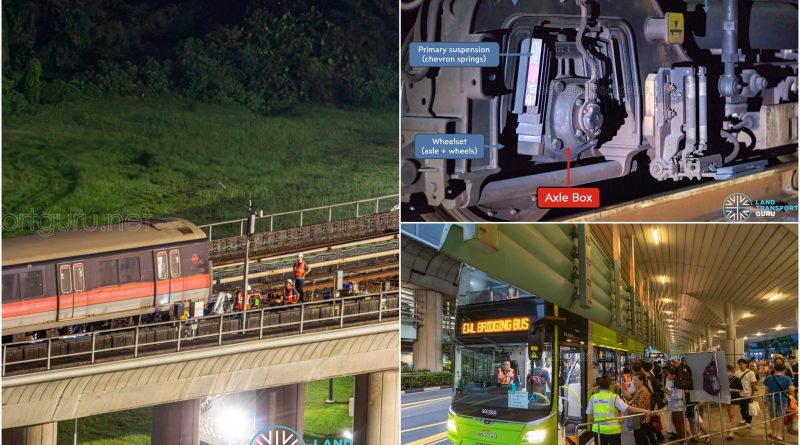

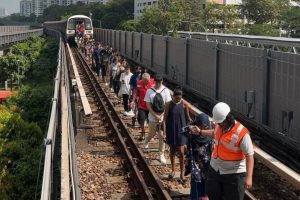
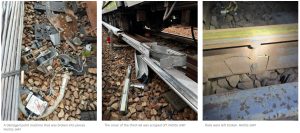
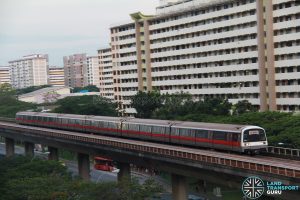
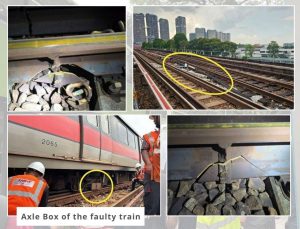

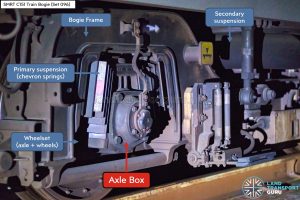
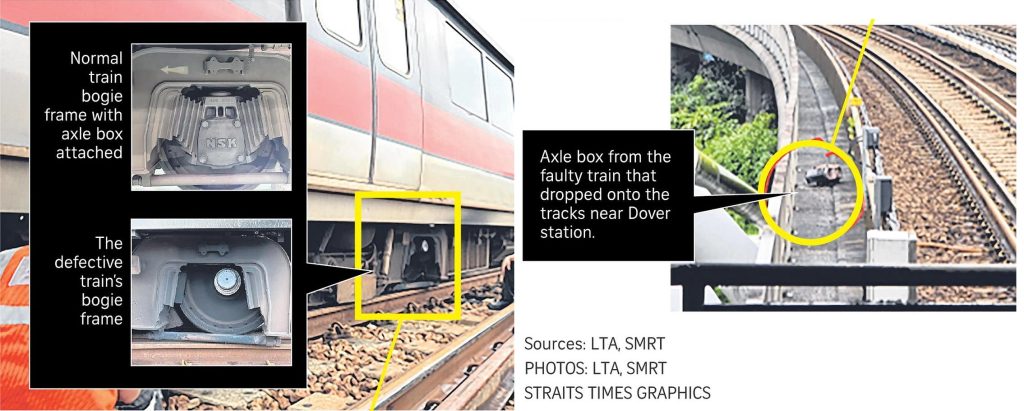
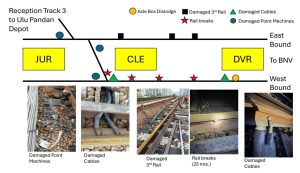

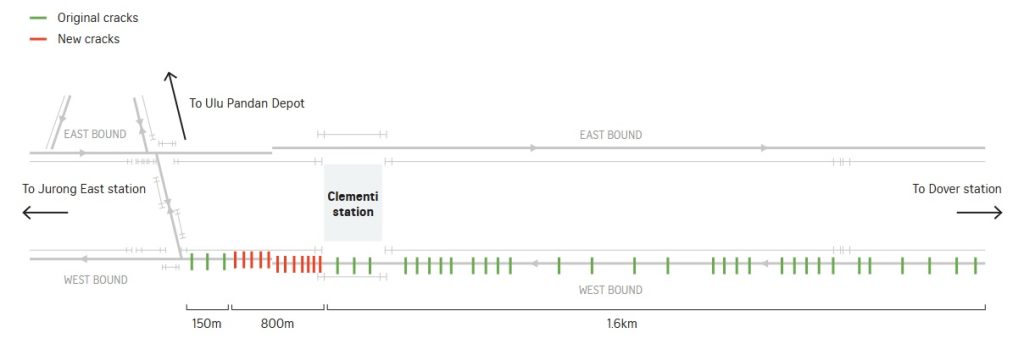
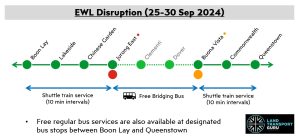
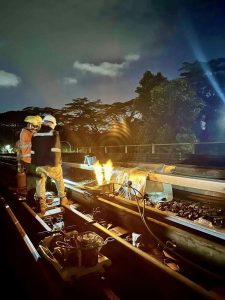
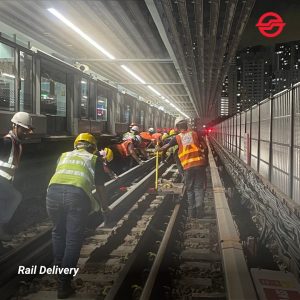

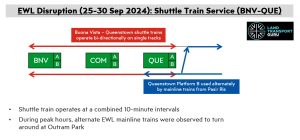
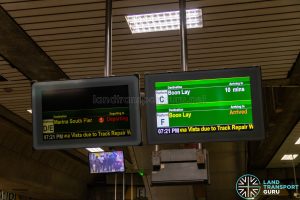
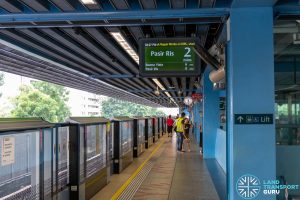
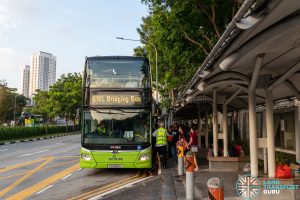

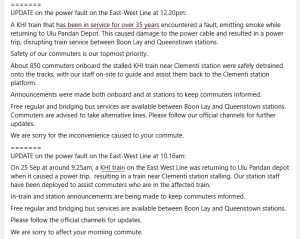

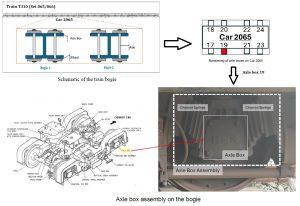
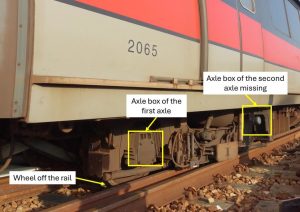
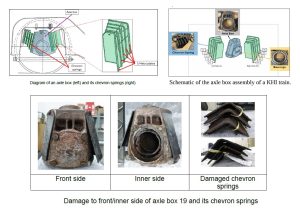
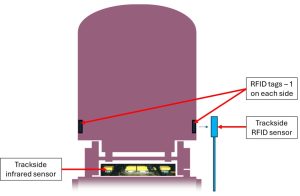


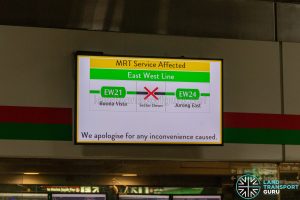
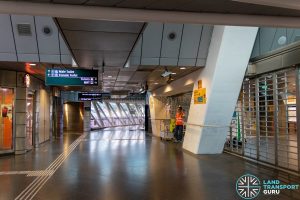
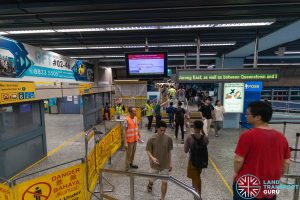
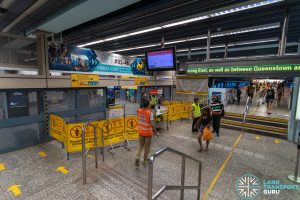
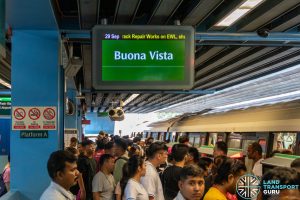

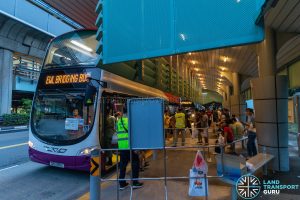
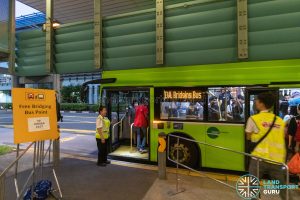
Govt need a back up lines to supplement both EWL and NSL, These two lines is like a time bomb.
The line is already old,Many staffs jump ship. To SBST and the current management is big headed… What LTA need to do is to let a few svc run parallel or simply built a new Tengah line to Shenton Way to supplement this line.. Our populations is getting bigger every damm year with new citizens and foreign workers..
This prove that the west need more redunancy…currently only the EWL serve the far west past Jurong East & no other alternative lines. The sector between Jurong Eaat and Buona Vista is super packed, the EWL is already beyond capacity. JRL wont help as it only serve withn the Western side & never head to the CBD, it will only help abit when it extends to Kent Ridge to Connect to CCL. CRL will only relief demand off commuters travelling west to east but not towards CBD, which the main source of demand comes from. Assuming the Seletar-Tengah Line merged and become a thing, the NSL will have 2 alternative lines(3 if you consider DTL), this is good as NSL is just as packed and as it getting older(it needs more redunancy). West meanwhile(EWL) has no other lines into CBD, LTA needs to consider a new rail line from Western Singapore into CBD. All Rail Lines from now should only have mininum of 4 car 5 door like TEL instead of 3 cars(CCL, DTL), Terrible Mistake to Make these 2 3 cars, population is growing hence we need to plan ahead to cater the future demands
More KSFC will serve on EWL